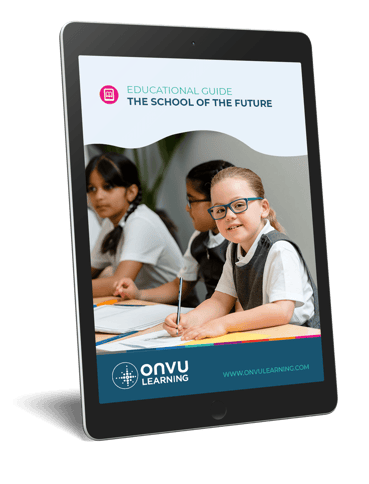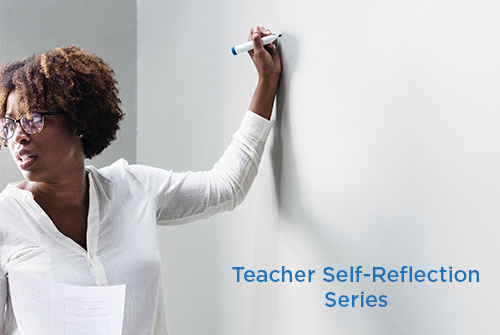- Self-Reflection
- 3 Minute Read



The previous article in this series set out the importance of teacher self-reflection and professional noticing to become a better professional. This article suggests how to start the process – either working by yourself or with a trusted colleague or mentor.
The complete self-reflection series:
Self-Reflection (Part 1): Introduction: Could ‘noticing’ and ‘reflection’ transform teaching?
Self-Reflection (Part 2): 8 Ways to reflect on a lesson and share your reflections
Self-Reflection (Bonus blog): 7 Ideas for remote reflection in teaching
Self-Reflection (Part 3): Creating a wider culture of self-reflection in your school
Self-Reflection (Part 4): How schools have enabled self-reflection and noticing
Self-Reflection (Part 5): Using ONVU Learning's Reflect tool to implement self-reflection
Please subscribe to our newsletter to keep up to date with the latest blog series on lesson observation, teacher development and remote coaching.
Before you start, make sure that you are clear about your goals:. it’s important to start small. It would be difficult to focus on more than one teaching group and their issues, so it could be beneficial to zoom in even closer and look at a small group or even a single individual you’re concerned about. Your issue might be something you’re concerned about – examples might include behaviour management, explaining new ideas, questioning, or effective group work. This case study from Hereford Academy shows an NQT focusing on specific issues with one year 9 class.
Teacher self-reflection works best when you can spend time doing it close to the lesson you’re thinking about – so try to find a lesson before lunchtime, at the end of the day or when you have free time.
The problem with the focus on graded or ‘tick box’ lesson observations means that many teachers can approach reflection as a process for demonstrating how ‘good’ they are. It’s important to frame reflection as an objective approach – all teachers will do many things well but be able to identify areas to become even better at.
Write down your impressions of the lesson as soon as possible. It might seem difficult to do this, but one idea to help is to draw a timeline of the lesson on a blank sheet of paper. You can jot words against specific times as the lesson progresses and then go back and expand your thoughts once the lesson is over. It can help to have students work in front of you when reflecting after the lesson so you can see how they responded to the teaching.
Rather than critiquing your teaching, focus your review on the learning that took place. Were students able to carry out the tasks you set the way you wanted them to? Were there obvious misconceptions in their learning? Did they ask and answer questions in the way you would have expected?
Rather than thinking about doing things ‘better’, focus on what changes you could make that might affect student learning. For example, in this case study from Aston University Engineering Academy, teacher Zara Sahota considered different ways of enabling students to let her know when they understood (or did not understand) new ideas.
At this stage, it is often a good idea to discuss your findings with a colleague or mentor. As our previous blog on ‘lesson study’ pointed out, discussing teaching and learning in an autonomous way can motivate and re-energise teachers. Colleagues can draw on their personal experiences and also suggest ways of implementing and assessing changes you make.
Self-reflection is an ongoing process – so make sure you apply your new ideas and see their impact. Ensure that you give them time to have an impact and be honest about the changes made as a result.

The School of the Future Guide is aimed at helping school leaders and teachers make informed choices when designing the learning environments of the future using existing and upcoming technologies, as they seek to prepare children for the rest of the 21st century – the result is a more efficient and competitive school.
KEEP IN TOUCH WITH ONVU LEARNING AND RECEIVE THE LATEST NEWS ON EDTECH, LESSON OBSERVATION, AND TEACHER TRAINING AND DEVELOPMENT.